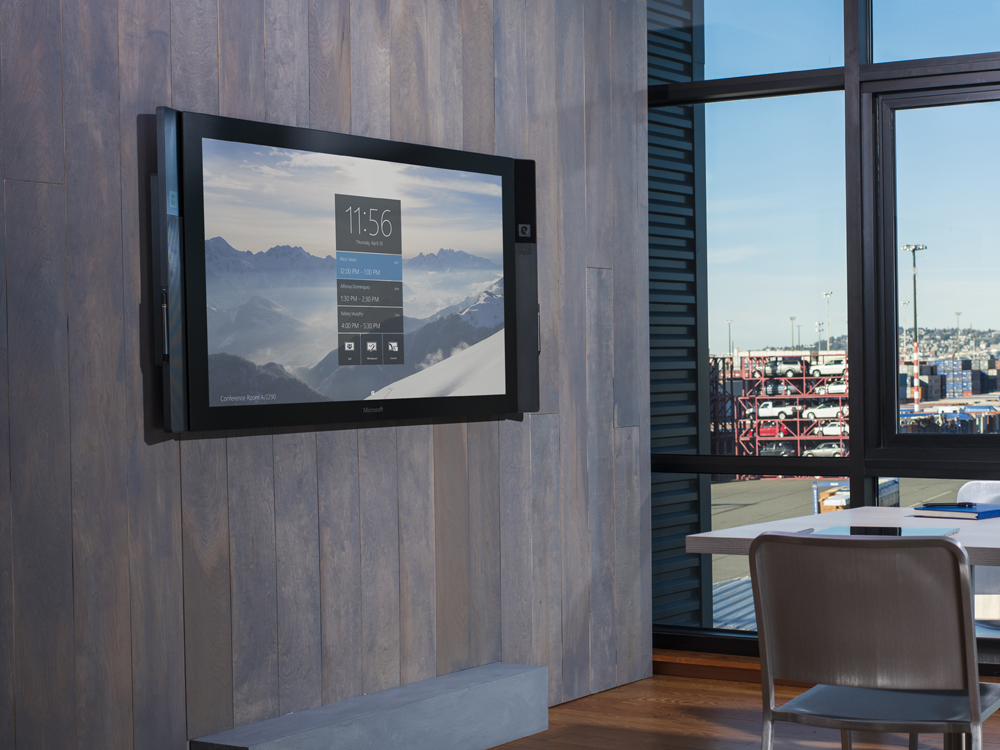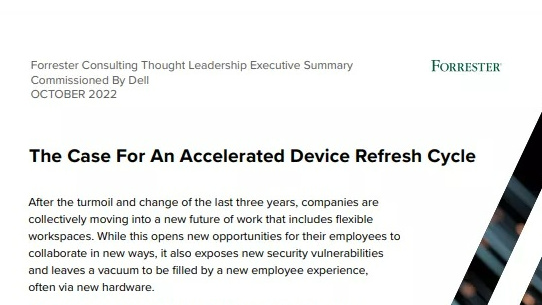Microsoft Surface Hub hands-on review
Is Microsoft's high-tech whiteboard worth all the cash?


Microsoft has recently expanded its Surface family of devices, launching a refreshed Surface Pro and a brand new Surface Laptop. However, there's one big Surface product that you may not be familiar with: the Surface Hub.
Unlike the rest of the Surface family, this mammoth device is solely for businesses. Designed to empower collaboration, the Surface Hub is essentially a wall-filling touchscreen, and is intended to be the tech-heavy successor to the humble office whiteboard. We went hands-on to find out if it's really worth your investment.
It's big
First things first - we really can't stress enough how gigantic the Surface Hub is. It's available in two sizes, and the smallest is 55in going all the way up to a whopping 84in for the larger version. The smaller version is 1080p only, but you can get a 4K resolution if you move up to the 84in model.
The Surface Hub is engineered for collaboration, so naturally supports a wide variety of screen-sharing and presentation methods. You can connect a laptop via DVI, HDMI or VGA, or wirelessly share your screen via Miracast. However, during our demonstration we did notice a distinct lag when presenting wirelessly.
Of course, the Surface Hub is more than just a jumped-up monitor; it can also run collaboration apps natively. The main attraction here is the whiteboard app, which functions like a cross between OneNote and a standard whiteboard. It ships with two Surface Hub Pens, but can support up to 100 points of touch interaction. It can also support up to three Surface Pens simultaneously writing, and identifies them so you can keep track of who's written what.
There's also support for smart features like pinch-to-zoom, lassoing and moving content and sharing the contents of your whiteboard. At present though, you're only able to save your whiteboard as an image, and then share it via OneDrive or email - there's no integration with OneNote or Microsoft Teams, which feels like a major missed opportunity.
Another unexpected limitation is the apps. While the Surface Hub does technically run Windows 10, it runs a special 'hardened' version of the OS called Windows 10 Teams. Much like Windows 10 S, it will only run Universal Windows Platform apps, so if you've got any legacy business apps that haven't been ported to UWP then you can forget about using them with the Surface Hub.
Sign up today and you will receive a free copy of our Future Focus 2025 report - the leading guidance on AI, cybersecurity and other IT challenges as per 700+ senior executives
Collaboration is about more than working with people within your organisation, and Microsoft has packed the Surface Hub will a full suite of videoconferencing equipment. Each side of the Surface Hub features a wide-angle 1080p camera, which ensures the whole room is easily visible. Meetings can be conducted through Skype for Business, with the idea being that you snap a Skype window to one side of the Hub and a whiteboard window to the other.
If you wanted to use the Surface Hub primarily as a videoconferencing tool, however, you may also be somewhat unsatisfied. Although you can host a vast number of people in one meeting, the Surface Hub's Skype for Business app can only display three video tiles at once. They don't scale to a particularly large size even when the app is full-screen, which is disappointing given that there's so much screen to fill.
On the other hand, quality is excellent, with video and audio both coming over clearly. There's even the option to control which of the two camera is transmitting, if you have confidential information on one side of your office.
So, how much can businesses expect to pay for this marvel? Well, if you want the full-size, 84in 4K version, it can be yours for the low, low price of just 21,000. Microsoft says that it has about 2,000 customers who have purchased Surface Hubs, with some ordering hundreds, but honestly, we're not convinced.
There are attractive features and it's undeniably useful for empowering collaboration across teams, but for 21,000, is it really that much more effective than an ordinary whiteboard or a digital projector? It's large, it's flashy, and it'll surely be impressive whenever you've got a client coming over, but unless you've got several thousands of pounds desperately burning a hole in your IT budget, there's little point in buying a Surface Hub.
Adam Shepherd has been a technology journalist since 2015, covering everything from cloud storage and security, to smartphones and servers. Over the course of his career, he’s seen the spread of 5G, the growing ubiquity of wireless devices, and the start of the connected revolution. He’s also been to more trade shows and technology conferences than he cares to count.
Adam is an avid follower of the latest hardware innovations, and he is never happier than when tinkering with complex network configurations, or exploring a new Linux distro. He was also previously a co-host on the ITPro Podcast, where he was often found ranting about his love of strange gadgets, his disdain for Windows Mobile, and everything in between.
You can find Adam tweeting about enterprise technology (or more often bad jokes) @AdamShepherUK.
-
 'Digital hide-and-seek': Workers are wasting hundreds of hours a year sourcing the information they need to carry out their role
'Digital hide-and-seek': Workers are wasting hundreds of hours a year sourcing the information they need to carry out their roleNews Knowledge workers globally are wasting a quarter of their working week tracking down information, new research from Atlassian has revealed.
-
 Untethered: How CIOs and CISOs are paving the way for the new hybrid workforce
Untethered: How CIOs and CISOs are paving the way for the new hybrid workforceWhitepaper Effective techniques to transition from exposed legacy infrastructure to an effective zero trust strategy
-
 Unlocking the power of your digital services
Unlocking the power of your digital servicesSponsored Businesses have invested significant cash into technology since COVID-19, but are they really getting their money's worth?
-
 Delivering fast and secure digital experiences for the modern hybrid workforce
Delivering fast and secure digital experiences for the modern hybrid workforceWhitepaper A new approach to digital experience monitoring that can monitor the health of all systems
-
 Collaboration is the glue that holds your business together
Collaboration is the glue that holds your business togetherSPONSORED A combination of productivity tools and cloud telephony can enable the best from your workforce
-
 The future of work and the forgotten workforce
The future of work and the forgotten workforcewhitepaper How to deploy a mobile-first strategy so no one gets left behind
-
 The case for an accelerated device refresh cycle
The case for an accelerated device refresh cycleWhitepaper Achieving a more cost-effective device lifecycle overall
-
 Employees are choosing how they work
Employees are choosing how they workWhitepaper And with the right secure digital strategy, this could be a great thing for your business: today and far into the future


